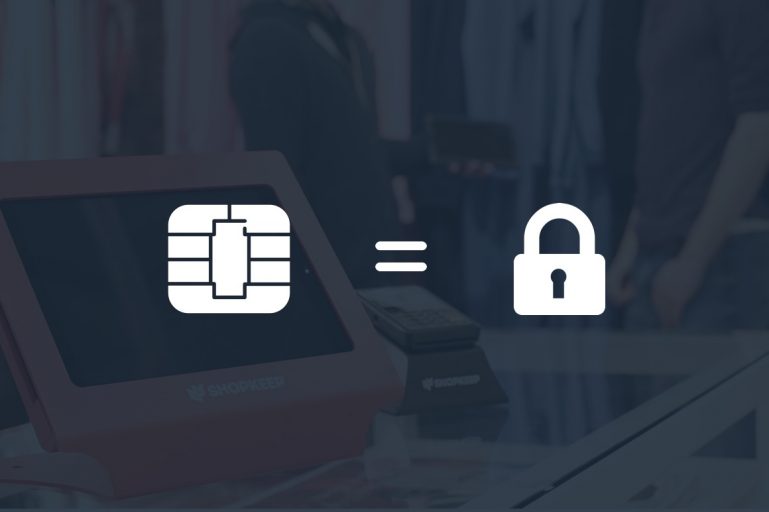
The Future of POS Software Technology: EMV Chip Cards
“They always say time changes things, but you actually have to change them yourself.”
– Andy Warhol
Point of sale (POS) software technology is changing, and it’s changing fast. Mobile payments, a mere blip on the radar at less than $1 billion of transactions in 2012, are projected to surpass $118 billion of transactions in 2018. EMV chip cards, the global standard for secure transactions, aren’t just coming to the United States, they’re already here. More than 1.1 billion cards will be issued by the end of 2015, up from 100 million at the end of 2014. And those are just the elephants in the room. The seeds of other enormous changes may have already been planted, and it’s just a matter of time before they sprout. You need to be ready.
This series of posts about the future of POS software technology will take you through some of the key info you should know about the latest industry news and how you can best be prepared for any and all of the inevitable changes coming your way in the future. The second post today is focused on EMV chip cards.
So why is the United States finally making the change? Because the credit card companies said so. Visa, MasterCard, American Express and Discover have set an October 1, 2015 deadline for a shift in liability for fraudulent transactions. After that date, whichever party in a transaction is the least EMV-compliant will be the one on the hook for the fraud. And since the card companies will have sent out nearly one billion EMV chip cards by that point, merchants like you better be ready to accept them!
We’ll get to how you should prepare in a minute, but first, it would be instructive to spend a little more time on how this change will affect your business.
- Say goodbye to the credit card swipe: EMV chip cards work by being inserted into your credit card reader (usually at the bottom) and staying there for the length of the transaction (usually a few seconds). Make sure you train your staff so that they’re prepared as soon as customers start bringing in the new cards. Also, since this takes slightly longer than swiping a magstripe card, if speed is of the essence for you, you may want to think about your mobile payments solutions.
- Signing receipts is here to stay…for now: Transactions made with EMV chip cards are customarily verified via either “Chip and PIN” or “Chip and Signature”. The former means that after inserting a card, the customer types in a secret PIN to confirm the transaction, while the latter means that the customer signs a receipt in order to confirm the transaction. Again the United States is not quite catching up to the rest of the world, as “Chip and PIN” is the usual standard, but almost every card issuer is sticking with “Chip and Signature”, meaning that you will still be asking your customers to sign receipts until the credit card companies decide to make a change.
- The customer will be king: One day, when those credit card companies take the plunge on “Chip and PIN”, your customers will be the ones using your credit card readers…every time. This idea may be familiar to you if you run a supermarket for example, but for bars and restaurants, this will be a big change and you will need to plan accordingly with mobile credit card readers that can be easily handed over to your customers. Luckily you will probably have quite some time to prepare.
So what should you do?
- Find an EMV-compatible payments terminal: If you took our advice in the last post about mobile payments, hopefully you’ve already found an appropriate terminal, but if not, look for one that is both NFC- and EMV-compatible. Also, given the importance of the changes this year, many companies are offering deep discounts or even free terminals, so be on the lookout for those offers!
- Get point of sale software that’s EMV-compatible: That EMV-compatible terminal needs to work with software that allows you to process payments from EMV chip cards. Not every provider will be able to process payments from EMV chip cards right away, so make sure you do your research and figure out which POS software and which credit card processors will do the trick. Then move forward when you find the right match.
So EMV chip cards are going to change things at your point of sale and they’re going to change things this year. Your job is to be prepared. Reading this article is a good start, but you’ve also got to take action.
Want to try ShopKeep for yourself?
Just answer a few easy questions.
Need help finding the right point of sale?
Just complete the form. We’ll call you right back to explain how ShopKeep can work for you.
Hit the ground running.Sprinting, in fact!
Read our free, comprehensive guide, Small Business 101, to learn all you need to know about starting a thriving business.

